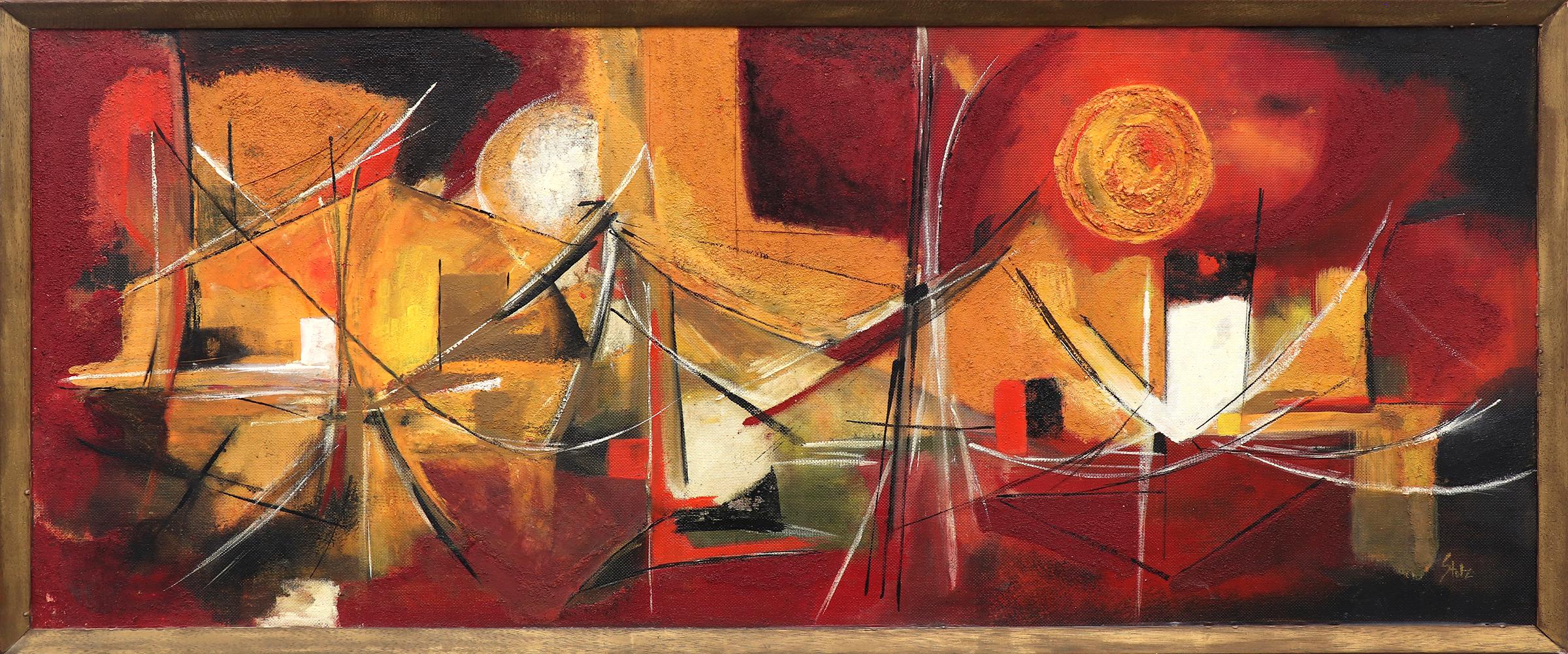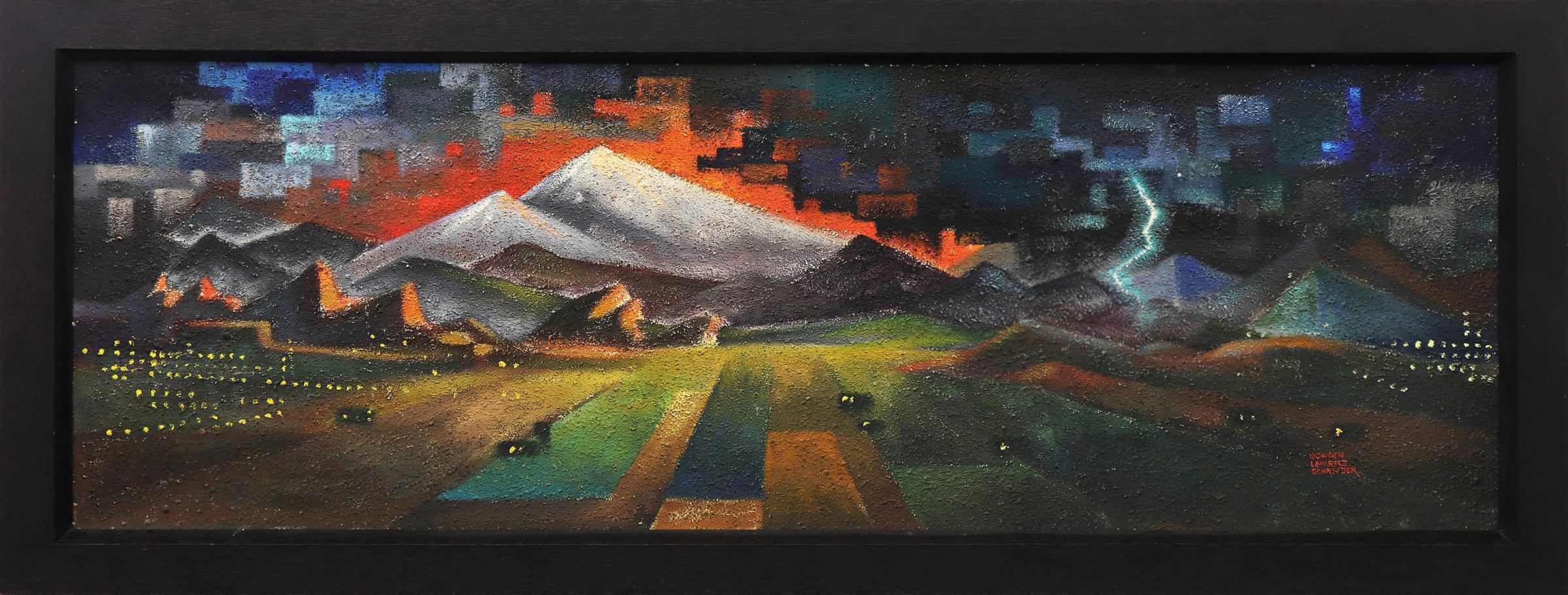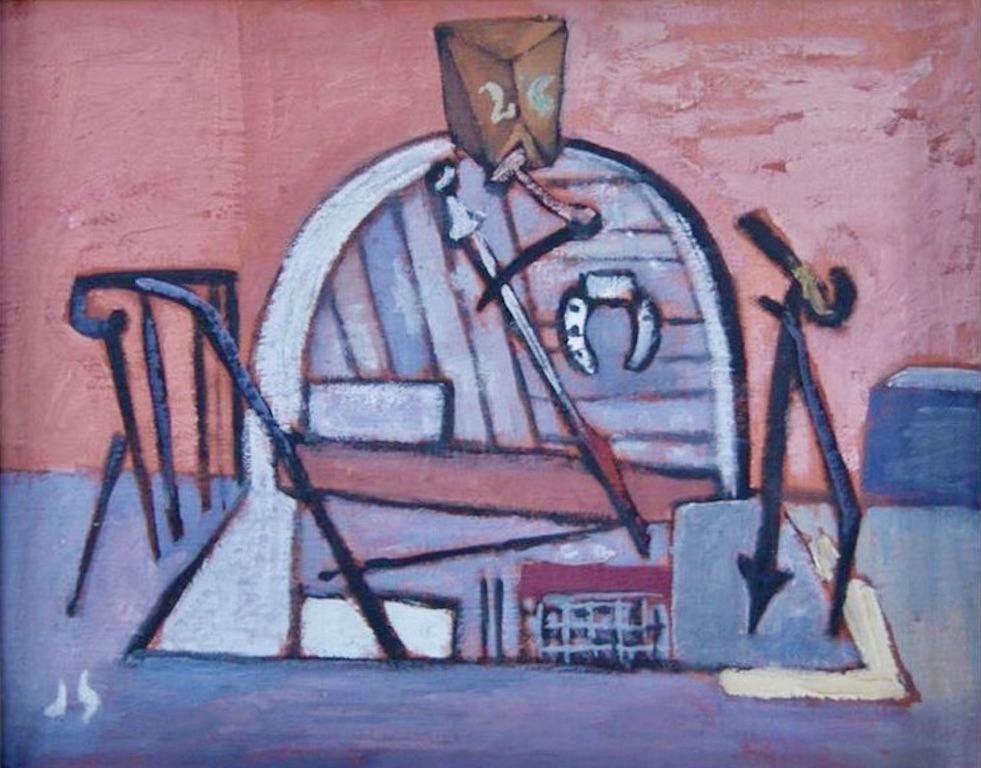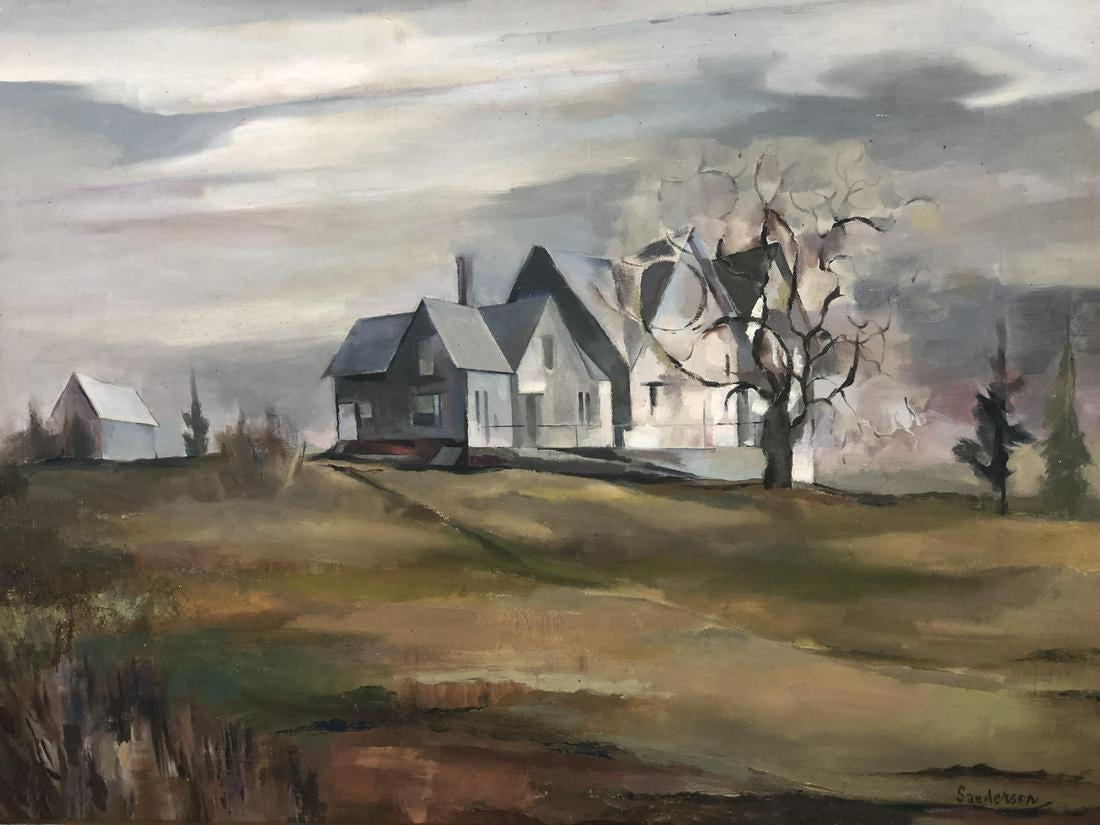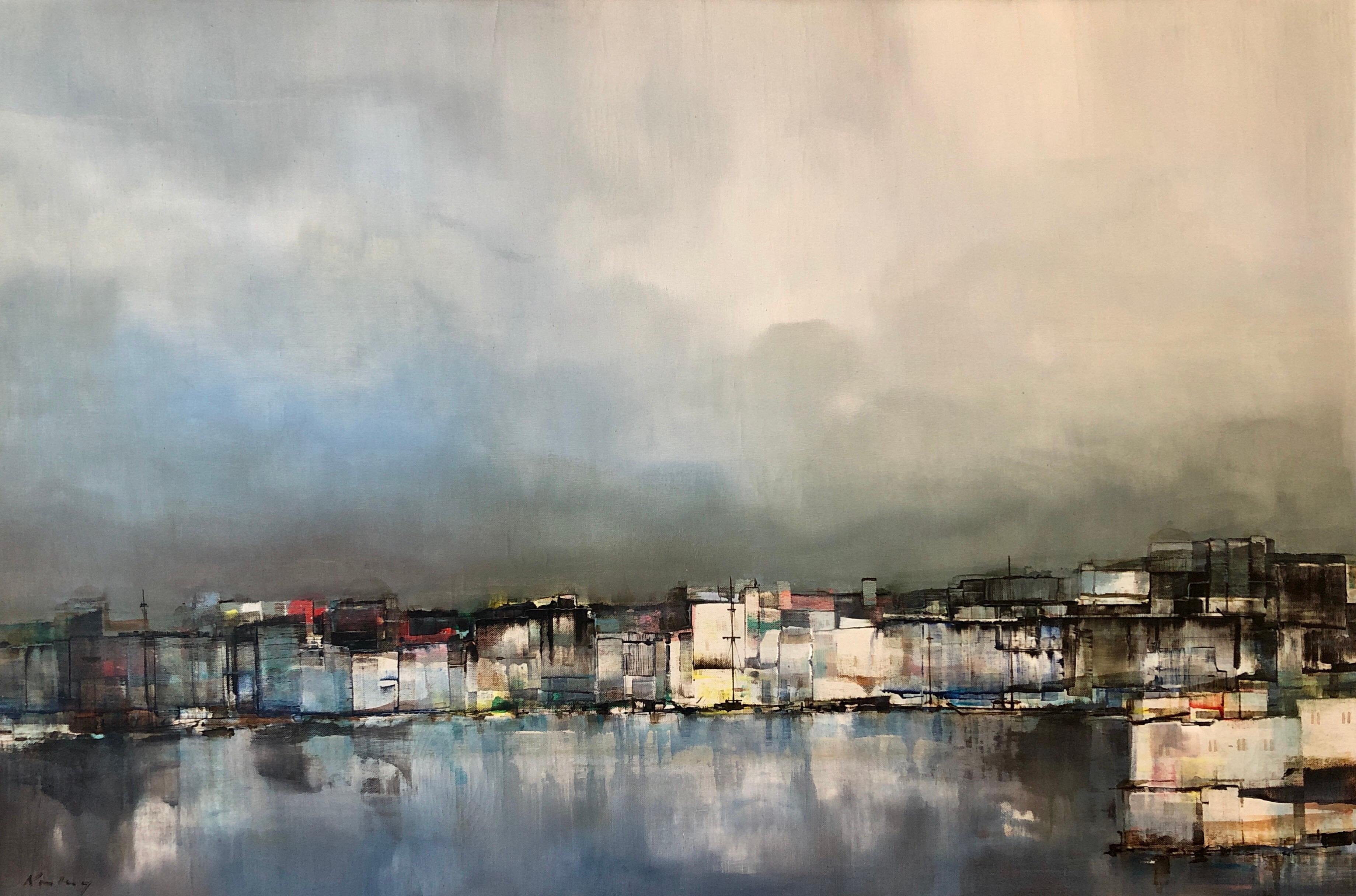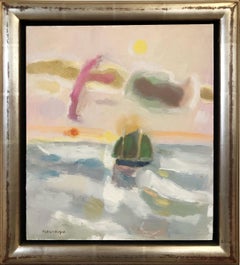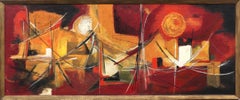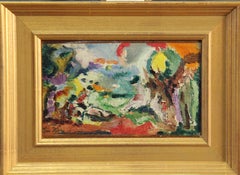
Leon Kelly, Abstract Landscape, Oil on Canvas/Mounted, 1923
View Similar Items
1 of 4
Leon KellyLeon Kelly, Abstract Landscape, Oil on Canvas/Mounted, 19231923
1923
About the Item
- Creator:Leon Kelly (1901-1982, American)
- Creation Year:1923
- Dimensions:Height: 9.5 in (24.13 cm)Width: 12.75 in (32.39 cm)
- Medium:
- Movement & Style:
- Period:
- Condition:The painting is in very good and original condition, it has been cleaned and varnished.
- Gallery Location:Doylestown, PA
- Reference Number:1stDibs: LU106333527772
You May Also Like
- Head to Sea, Modernist sailing sceneBy Ralph Eugene Della-VolpeLocated in Greenwich, CTA vibrant and yet romantic sailing scene which was a favorite series by Della-Volpe. His compelling colorist approach has made his works desirable as he was one of the few artists post-war to be representative in style like Milton Avery and Wolf Kahn. Head to Sea has the hallmark intense and lovely coloration for which Della-Volpe is known. He came out of Abstract Expressionism in the New York school but then pivoted, like Milton Avery to representational, colorist work. The frame is a silvered gold leaf float frame of quality and has a rubbed, antiqued surface...Category
Early 2000s American Modern Abstract Paintings
MaterialsOil, Board
- Mid Century Modern Abstracted Cityscape Oil Painting, American Modern, Red BlackLocated in Denver, COMid 20th century oil and spackle painting featuring an abstracted cityscape with a bridge and buildings by Henriette "Yetti" Stolz. Signed by the artist in the lower right margin. Pa...Category
Mid-20th Century American Modern Abstract Paintings
MaterialsOil, Board, Putty
- Southwestern Landscape Painting, Lightning Storm over Mountains, Semi AbstractLocated in Denver, COOriginal vintage painting of a Lightning Storm, Southwestern Mountain Landcape. Oil painting on textured board by Morton Lawrence Schneider (1919-2000). This large scale semi abstrac...Category
20th Century American Modern Landscape Paintings
MaterialsOil, Board
- Amish Farmscape #3By Edmund LewandowskiLocated in Los Angeles, CAAmish Farmscape #3, 1984, oil on canvas, 40 x 30 inches, signed and dated lower right; signed, dated, and titled verso About the Painting Amish Farmscape #3 is part of a multi-painting series of barns completed in the early 1980s for an exhibition at New York’s prestigious Sid Deutsch Gallery. Lewandowski painted this work at an important point in his career. It was the first major project undertaken by Lewandowski after his retirement from serving as the Chairman of Winthrop University’s Art Department, the last academic position he held after teaching for nearly thirty years. Lewandowski had been inspired to work on the series by a visit to Lancaster County, Pennsylvania. Like his friend and mentor, Charles Sheeler, Lewandowski had always been fascinated by vernacular architecture and the Amish barns of Pennsylvania brought back memories of rural scenes Lewandowski had painted in the Midwest much earlier in his career. Amish Farmscape #3 is a strong example of Lewandowski’s late precisionist work. The complexity of the composition and Lewandowski’s technical acumen are on full display. Being relieved of the burdens of teaching and administering a university art department likely allowed Lewandowski greater freedom and most importantly more time to complete the Amish Farmscape series. Although Lewandowski’s brand of precisionism changed throughout the years, he never deviated from the core tenets of the Immaculate School artists. In this work, we see simplified and flattened forms, the use of ray-lines to define light and space, the elimination of extraneous details, a polished almost machine-like finish, and the complete lack of visible brushstrokes, all hallmarks of the precisionist painters. Lewandowski was the last of the 20th century precisionists and in Amish Farmscape #3, we see just how successfully he continued to work in this style until his death in 1998. About the Artist Edmund Lewandowski was among the best of the second-generation precisionist painters. He was born and raised in Milwaukee, Wisconsin and studied at the Layton School of Art with Garrett Sinclair. Lewandowski achieved early success when in 1936 two of his watercolors were shown at the Phillips Collection as part of a Federal Art Project exhibition. Then, in 1937, his work was first exhibited at Edith Halpert’s Downtown Gallery which represented Lewandowski into the 1950s. Under Halpert’s guidance, Lewandowski continued to explore watercolor as his main medium during the 1930s and 1940s, since the gallery already represented Charles Sheeler, who worked primarily in oils. Sheeler became Lewandowski’s major influence as the primary leader of the ill-defined, but very recognizable Immaculate School artists, which included other Downtown Gallery painters, Niles Spencer, George Ault, and Ralston Crawford, as well as Charles Demuth and Preston Dickinson, both of whom died at a young age and had been represented by the Charles Daniel Gallery. Sheeler is credited with giving Lewandowski technical advice on how to make his paintings more precise and tightly rendered and by all accounts, Sheeler was a fan of Lewandowski’s work. Through the Downtown Gallery, Lewandowski’s paintings were accepted into major national and international exhibitions and purchased by significant museums and collectors. Franklin and Eleanor Roosevelt and Nelson Rockefeller acquired works by Lewandowski. He was included in the Museum of Modern Art’s important 1943 exhibition, American Realists and Magic Realists as well as juried exhibitions at the Whitney Museum of American Art, the Pennsylvania Academy of Fine Arts, and the Art Institute of Chicago. Lewandowski also completed commissions for magazines during the 1940s and 1950s, including several covers for Fortune. Throughout his career, Lewandowski explored urban and rural architecture, industry, machinery, and nautical themes. Looking back on his career, Lewandowski wrote, “My overwhelming desire as an artist through the years has been to record the beauty of man-made objects and energy of American industry on canvas. For as far back as I can recall, the cityscapes, farms and depictions of industrial power and technological efficiency has had a great attraction for me. I try to treat these observations with personal honesty and distill these impressions to a visual order.” Lewandowski is credited with extending precisionism to the Midwest and successfully continuing the style into the 1990s, three decades after Sheeler’s death and six decades after Demuth’s passing. Late in his career, Lewandowski enjoyed a resurgence of popularity as he was represented during the 1980s by New York’s Sid Deutsch and Allison Galleries...Category
Mid-20th Century American Modern Landscape Paintings
MaterialsCanvas, Oil
Price Upon Request - WPA American Scene Modernism 20th Century NYC Industrial "Cellar with Horseshoe"By Joseph SolmanLocated in New York, NY"Cellar with Horseshoe" WPA American Scene Modernism 20th Century NYC Industrial Joseph Solman (1909-2008) "Cellar with Horseshoe," 16 x 20 inches, oil on canvas circa 1938, initial...Category
1930s American Modern Landscape Paintings
MaterialsCanvas, Oil
- Salutations, Architectural Abstract Scene, Cultural and Spiritual CommentaryLocated in Doylestown, PA"Salutations" is a 12 x 16 inches, oil on canvas painting by American modernist and surrealist, female artist Peter Miller. The work is painted in a vibrant color palette. The painti...Category
1940s American Modern Abstract Paintings
MaterialsCanvas, Oil

